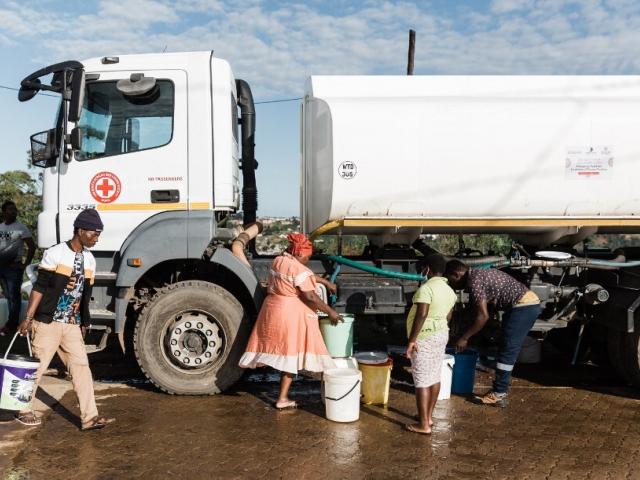My top 3 Africa Check facts: A R600k take-away, water’s ‘signature’ & counting cattle
Our website is a great catalogue of interesting, important and sometimes downright curious facts – who would have known that Nigeria had the most players in the top 200 of the World English Language Scrabble Players Association’s rankings back in April?
Reading a number of fact-checks, and working on a few of my own this year, has helped me discover a number of facts I’ll definitely be sharing this holiday with family and friends – because facts are festive, too.
Here I give a round-up of my top 3.
The State of Capture report released in early November grabbed South Africa’s attention with its recount of the public protector’s investigation into the Gupta family’s influence on the state.
The report got tongues wagging, inspired a Twitter account and sent the Africa Check team on an unconventional fact-checking mission: uncovering how big a bag R600,000 would require.
Hitting a dead-end while trying to establish the dimensions of a single R200 note, the Africa Check team put their arts-and-crafts skills to work to create R200 stacks of our own.
The results, while not altogether scientific, got the job done.
Six R100,000 stacks of R200 notes can comfortably fit into a plastic shopping bag. Who would have thought?
Read our piece.
Fact-checkers love interesting ways of measuring things. Learning new study methods and designs makes the job that much more interesting.
While working on my most recent fact-check on garden-water use in Johannesburg, I became genuinely curious; how could a household’s water use be measured accurately?
Speaking to water experts I learned that by using meters and dataloggers a flow trace analysis could be run. With this type of analysis, the different flow patterns of water used in a house could be identified and logged.
Interestingly, I learned, different water-uses have their own “signature” that can be identified with this method.
Read my fact-check.
A report from this time last year on Botswana’s cattle population reaffirmed the adage, for me at least, that sometimes truth is stranger than fiction.
Looking at Botswana agricultural survey reports together with United Nations population estimates, Africa Check picked up on an interesting trend: from 1979 to 2013 Botswana’s cattle population outnumbered the country’s inhabitants, except for two years (2007 and 2013).
Now, that’s a great “did you know?” for the dinner table.
Read our fact-check.
Reading a number of fact-checks, and working on a few of my own this year, has helped me discover a number of facts I’ll definitely be sharing this holiday with family and friends – because facts are festive, too.
Here I give a round-up of my top 3.
Six R100,000 stacks & a plastic bag
The State of Capture report released in early November grabbed South Africa’s attention with its recount of the public protector’s investigation into the Gupta family’s influence on the state.
The report got tongues wagging, inspired a Twitter account and sent the Africa Check team on an unconventional fact-checking mission: uncovering how big a bag R600,000 would require.
Hitting a dead-end while trying to establish the dimensions of a single R200 note, the Africa Check team put their arts-and-crafts skills to work to create R200 stacks of our own.
The results, while not altogether scientific, got the job done.
Six R100,000 stacks of R200 notes can comfortably fit into a plastic shopping bag. Who would have thought?
Read our piece.
Identifying water use’s ‘signature’
Fact-checkers love interesting ways of measuring things. Learning new study methods and designs makes the job that much more interesting.
While working on my most recent fact-check on garden-water use in Johannesburg, I became genuinely curious; how could a household’s water use be measured accurately?
Speaking to water experts I learned that by using meters and dataloggers a flow trace analysis could be run. With this type of analysis, the different flow patterns of water used in a house could be identified and logged.
Interestingly, I learned, different water-uses have their own “signature” that can be identified with this method.
Read my fact-check.
Counting cattle in Botswana
A report from this time last year on Botswana’s cattle population reaffirmed the adage, for me at least, that sometimes truth is stranger than fiction.
Looking at Botswana agricultural survey reports together with United Nations population estimates, Africa Check picked up on an interesting trend: from 1979 to 2013 Botswana’s cattle population outnumbered the country’s inhabitants, except for two years (2007 and 2013).
Now, that’s a great “did you know?” for the dinner table.
Read our fact-check.


Add new comment